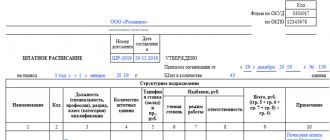Scope of application of the new order of the Ministry of Transport
Like the previously valid document, the new order was approved to implement the provisions of Art. 329 of the Labor Code of the Russian Federation, according to which the working hours of drivers are determined by the relevant federal department.
The new features of the organization of work and rest from the Ministry of Transport apply to all drivers working under an employment contract in organizations or individual entrepreneurs. At the same time, a clarification : individual entrepreneurs who independently drive their cars are also required to comply with the requirements of the new order of the Ministry of Transport from 2021.
Driving a car must be included in the job responsibilities of employees who are subject to the order of the Ministry of Transport.
As before, the provisions of the Order do not apply :
- to drivers on intercity flights;
- to employees. managers of rescue and fire trucks;
- to drivers of cars providing medical assistance in emergency situations.
From 2021, the order of the Ministry of Transport does not apply to the following categories of transport workers:
- drivers of government passenger cars;
- drivers engaged in transportation within the company's territory and who do not travel on public roads;
- drivers of departmental security cars;
- army drivers;
- drivers of agencies carrying out operational investigative activities.
As a result, the scope of application of the Ministry of Transport order has been specified : in addition to company employees have been added . At the same time, drivers working on the company’s territory, as well as those employed in various government agencies, are excluded
Break between daily driver shifts
As mentioned earlier, a daily rest is a period of rest between work shifts. According to the law, the duration of the break for drivers between daily shifts is determined as follows:
- If a daily time tracking scheme is used. In this case, the duration of rest is determined by the formula: (2 X PB) - OP. PB is working time excluding lunch, and OP is lunch break. For example, you worked from 10 to 18.30 - and at the same time you had a lunch break lasting 30 minutes. Let's calculate the duration of rest using the formula: (2 x 8 hours) - 30 minutes = 15 hours 30 minutes. In other words, the next working day can begin no earlier than 10 o’clock the next day.
- If a total time tracking scheme is used. In this case, the duration of daily rest should be at least 12 hours for all major situations. On city and suburban buses - at least 9 hours, on intercity buses - at least 11 hours. After completion of the trip, drivers should also receive additional proper rest.
Regulation of drivers' working hours from 2021
While maintaining the provision establishing the normal duration of weekly working hours equal to 40 hours , the new order of the Ministry of Transport does not contain provisions requiring working strictly 8 or 7 hours a week. That is, the number of working days per week and their duration may change - provided that the specified weekly time limit is met.
The possibility of introducing summarized recording of working time has been retained. In this case, the accounting period should still be no more than 1 month , and in some cases, when this is not possible, no more than 3 months.
The new order of the Ministry of Transport, starting from 2021, excludes the possibility of establishing a 6-month accounting period for the transportation of passengers in resort areas and for seasonal transportation.
In essence, the permitted length of the working day for summarized accounting remained unchanged
- up to 10 hours – under normal conditions;
- up to 12 hours – on city and suburban bus routes;
- up to 12 hours - for drivers of the healthcare system, telephone, telegraph services, communication institutions, when transporting heads of organizations, television services and cash-in-transit vehicles, taxis, as well as rotation crews.
It is also possible to increase the maximum duration of the working day by 2 hours - that is, up to 12 hours . Given that:
- the need to complete the transportation;
- proceeding to the parking lot.
The new order of the Ministry of Transport, starting from 2021, does not provide for the monthly preparation of a shift schedule for drivers of urban and suburban traffic.
Peculiarities of working time and rest time for road transport workers
!
1. Working hours of drivers During working hours, the driver must perform his job duties in accordance with the terms of the employment contract, the internal labor regulations of the organization and the work schedule (shift). The driver's working time includes: a) driving time; Important! Driving time during a daily work period (shift) cannot exceed 9 hours, and in mountainous areas when transporting passengers by buses with an overall length of over 9.5 meters and when transporting heavy, long and large cargo, it cannot exceed 8 hours. With cumulative accounting of working hours, driving time during a period of daily work (shift) can be increased to 10 hours, but no more than twice a week. In this case, the total duration of driving for two weeks in a row cannot exceed 90 hours. In the case of summarized recording of working hours for bus drivers carrying out transportation in urban and suburban traffic, it is allowed to introduce summarized recording of driving time. b) time of special breaks for rest from driving on the way and at final destinations;
Important! For intercity transportation, after the first four hours of continuous driving, the driver is given a special break to rest from driving on the road for at least 15 minutes; subsequently, breaks of this duration are provided no more than every 2 hours. In the event that the time for providing a special break coincides with the time for providing a break for rest and food, the special break is not provided. The frequency of breaks in driving for short-term rest for the driver and their duration are indicated in the time assignment for driving and parking the car. c) preparatory and final time for performing work before leaving the line and after returning from the line to the organization, and for intercity transportation - for performing work at the turnaround point or on the way (at a parking place) before the start and after the end of the shift; d) the time of the driver’s medical examination before leaving the line (pre-trip) and after returning from the line (post-trip), as well as the time of travel from the workplace to the place of the medical examination and back; Important! The composition and duration of preparatory and final work included in the preparatory and final time, and the duration of the driver’s medical examination are established by the employer, taking into account the opinion of the representative body of the organization’s employees (if any). e) parking time at loading and unloading points, at passenger pick-up and drop-off points, at places where special vehicles are used; e) downtime not due to the driver’s fault; g) the time of work to eliminate operational malfunctions of the serviced vehicle that arose during work on the line, which do not require disassembling the mechanisms, as well as performing adjustment work in the field in the absence of technical assistance; h) the time of protection of cargo and vehicle during parking at final and intermediate points during intercity transportation if such duties are provided for in the employment agreement (contract) concluded with the driver;
Important! The time spent guarding the cargo and the vehicle is counted toward the driver’s working hours in the amount of at least 30%. The specific length of time for guarding cargo and a vehicle, counted toward the driver during working hours, is established by the employer, taking into account the opinion of the representative body of the organization’s employees (if any). If transportation in one vehicle is carried out by two or more drivers, the time spent guarding the cargo and the vehicle is counted as working time for only one driver; i) the time the driver is present at the workplace when he is not driving a car, when two or more drivers are sent on a trip;
Important! The time of presence at the workplace of a driver carrying out intercity transportation when he is not driving a car, when sending two or more drivers on a trip, is counted towards his working time in the amount of at least 50%. The specific length of time a driver is present at the workplace when he is not driving a car, when two or more drivers are sent on a trip, counted as working hours, is established by the employer taking into account the opinion of the representative body of the organization’s employees (if any). j) time in other cases provided for by the legislation of the Russian Federation.
Important! Normal working hours for drivers cannot exceed 40 hours per week. For drivers working on a five-day working week with two days off, the normal duration of daily work (shift) cannot exceed 8 hours, and for drivers working on a six-day working week with one day off - 7 hours. When recording working hours together, the duration of daily work (shift) of drivers cannot exceed 10 hours. The duration of work on the eve of weekends and non-working holidays, as well as at night (from 22:00 to 06:00) is reduced by 1 hour. When working in harmful or dangerous working conditions, the driver is given reduced working hours.
Important! The following are not allowed to work at night: - pregnant women; - workers under the age of eighteen. Women with children under three years of age, disabled people, workers with disabled children, as well as workers caring for sick members of their families in accordance with a medical certificate issued in the manner established by federal laws and other regulatory legal acts of the Russian Federation , mothers and fathers raising children under the age of five without a spouse, as well as guardians of children of the specified age, may be involved in night work only with their written consent and provided that such work is not prohibited to them for health reasons in accordance with the medical report. In this case, these employees must be informed in writing of their right to refuse to work at night. The duration of daily work (shift) can be increased to 12 hours for the following categories of drivers:
- drivers carrying out intercity transportation - if necessary, be given the opportunity to get to the appropriate resting place;
- for drivers working on regular city and suburban bus routes, with cumulative recording of working hours - in agreement with the trade union (if any);
- drivers carrying out transportation for healthcare institutions, public utility organizations, telegraph, telephone and postal communications, emergency services, technological (in-facility, intra-factory and intra-quarry) transportation without access to public roads, city streets and other populated areas, transportation in official cars cars when servicing state authorities and local governments, heads of organizations, as well as transportation on cash-in-transit, fire and rescue vehicles - if the total duration of driving a car during the period of daily work (shift) does not exceed 9 hours.
Important! If the driver's stay in the car is expected to last more than 12 hours, two or more drivers are sent on the trip. In this case, the car must be equipped with a sleeping place for the driver to rest. Work schedules (shifts) for regular transportation in urban and suburban traffic are drawn up by the employer for all drivers for each calendar month with daily or cumulative recording of working hours.
Important! Summarized accounting of working time with an accounting period of one month is established in cases where, due to production (work) conditions, the established normal daily or weekly working hours cannot be observed. For the transportation of passengers in resort areas in the summer-autumn period and for other transportation associated with servicing seasonal work, the accounting period can be set to last up to 6 months. The duration of working hours during the accounting period should not exceed the normal number of working hours. Summarized recording of working time is introduced by the employer, taking into account the opinion of the representative body of employees. Working time is kept on the basis of waybills and time sheets, based, incl. on the tachometer readings. With the shift method, working hours are recorded based on work schedules.
Important! Drivers of passenger cars (except taxis), as well as drivers of expedition vehicles and survey parties engaged in geological exploration, topographic-geodetic and survey work in the field, may have an irregular working day. The decision to establish an irregular working day is made by the employer, taking into account the opinion of the representative body of the organization’s employees (if any). The number and duration of work shifts according to work schedules (shifts) with irregular working hours are established based on the normal length of the working week, and weekly rest days are provided on a general basis. Drivers may be required to work overtime on a general basis (see the memo “Overtime”).
Important! When accounting for working time in total, overtime work during a working day (shift) together with work according to the schedule should not exceed 12 hours, with the exception of the following grounds for engaging in overtime work: - if necessary, complete (finish) work that has begun, which due to an unexpected delay due to technical production conditions could not be performed (finished) during the working hours established for the employee, if failure to perform (non-complete) this work could result in damage or destruction of the employer’s property (including the property of third parties located at the employer, if the employer is liable for the safety of this property), state or municipal property or create a threat to the life and health of people; - to continue work if the replacement employee does not show up, if the work does not allow a break. In these cases, the employer is obliged to immediately take measures to replace the shift worker with another employee. Overtime work must not exceed four hours for each driver on two consecutive days and 120 hours per year.
Important! For bus drivers working on regular city and suburban bus routes, with their consent, the working day can be divided into two parts. The division is made by the employer on the basis of a local regulatory act adopted taking into account the opinion of the representative body of employees (if any).
Important! The break between the two parts of the working day is established no later than five hours after the start of work. If a break is established between two parts of the working day later than four hours after the start of the working day, bus drivers working on regular city and suburban bus routes are provided with special breaks to rest from driving while driving, lasting at least 15 minutes in the period before the break is provided between two parts of the working day.
Important! The duration of the break between two parts of the working day should be no more than two hours, excluding time for rest and food. The break time between two parts of the working day for drivers working on regular city and suburban bus routes can be increased to three hours on the basis of an industry agreement concluded at the regional social partnership level, local regulations of the employer and with the consent of the driver. A break between two parts of a shift is provided in places provided for by the traffic schedule and providing the driver with the opportunity to use rest time at his own discretion. The break time between two parts of a shift is not included in working hours.
Important! For drivers carrying out transportation in official passenger cars when servicing officials of federal government bodies or government bodies of constituent entities of the Russian Federation with personal assignment to these persons of such cars with a crew, with their consent, the working day (shift) can be divided into two or more parts .
If the driver’s consent is obtained to divide the working day (shift), such division is made by the employer on the basis of a local regulatory act adopted in agreement with the elected body of the primary trade union organization, and in its absence, with another representative body of workers.
Important! The break between the two parts of the working day is established no later than five hours after the start of work.
Important! When dividing a working day (shift) into two or more parts of the working day, one of the breaks must be at least two hours, and the total time of breaks between parts of the working day (shift) cannot exceed 5 hours.
A break between parts of a shift is provided in places provided for by the traffic schedule or work schedule and providing the driver with the opportunity to use rest time at his own discretion.
Break time between parts of a shift is not included in working hours.
Driver’s working time and the procedure for dividing it into parts from 2021
The driver’s working day in the new order of the Ministry of Transport from 2021 also includes periods of direct driving and time for special breaks for the driver to rest. However, there are some differences.
From 2021, the list of activities not related to direct driving, but included in working hours, has been expanded Thus, a separate category of working time not related to management , which includes:
- preparatory and final time;
- periods of medical examinations;
- downtime is not the fault of the employee;
- car repair time;
- other periods provided for by law, labor and collective agreement.
Thus, from 2021, a driver’s working day includes an open list of types of employment not related to driving. It is determined by the agreements reached by the employer and employee. In addition, restrictions on crediting the following periods during working hours have been lifted:
- cargo security;
- presence at the workplace as a second driver.
From 2021, it is permissible to divide a driver’s work shift into parts with his consent . In 2021 and earlier, this was only possible for drivers of company cars for federal employees, as well as those driving buses on city and suburban routes.
has been expanded since 2021 .
In addition, as of 2021, there is a clear delineation of the maximum duration of a break established between parts of a shift:
- for drivers working in passenger transportation – no more than 3 hours ;
- for other drivers – no more than 5 hours .
do not include working hours . They must be provided no later than 5 hours after the start of the shift.
Important
The new order of the Ministry of Transport, starting from 2021, eliminates the rule on overtime work. Thus, the general rules for engaging in it, enshrined in the Labor Code of the Russian Federation, will be applied to drivers.
Drivers' rest mode
By law, drivers must also have rest periods. This time is needed to restore a person’s mental and physical strength. Forms of relaxation can be any - reading books, communicating on social networks or in real life, attending concerts, and so on. There are two types of rest for drivers:
- Rest between shifts. This category includes the time between a person's two work shifts. For example, a person finished work at 18:00 on Tuesday and continued work at 10:00 on Wednesday - in this case, rest between shifts is considered to be the time from 18:00 on Tuesday to 10:00 on Wednesday.
- Weekly rest. This category includes a special type of vacation, the main distinguishing feature of which is its long duration. In most cases, it is expressed in the form of a day off, but there are also other types of weekly rest (for example, a day off or a long break).
Irregular hours for drivers and the duration of driving a car from 2021
The restriction still applies , allowing the use of irregular working hours only:
- to drivers of passenger vehicles (except taxis);
- drivers participating in geological exploration and topographic survey work.
is not available for drivers of other vehicles . The very issue of regulating the duration of driving a car has been supplemented since 2021. Here's a comparison:
| ORDER OF THE MINISTRY OF TRANSPORT DATED 08/20/2004 No. 15 | NEW ORDER OF THE MINISTRY OF TRANSPORT FROM 2021 |
| No more than 9 hours per shift, and when driving in mountainous areas, transporting large and long cargo - no more than 8 hours . Increasing management time to 10 hours is only possible with cumulative accounting of working hours. | No more than 9 hours per shift with the possibility of increasing to no more than 10 hours , but no more than 2 times per calendar week |
| The total time of direct driving should not be more than 56 hours per week and no more than 90 hours in 2 calendar weeks | |
| Exceeding the total driving time per day is permissible by no more than 1 hour - to travel to a parking lot, destination or place of rest. | |
Work schedule for a personal driver
For a personal driver, it is most advisable to set the work schedule in irregular working hours.
Irregular working hours are established in cases where:
- requires periodic driver work exceeding normal working hours;
- the driver’s work cannot be accurately timed;
- employees distribute working time at their own discretion;
- An employee’s working time is divided into parts of varying indefinite duration.
However, it is worth considering that working on irregular working hours for a personal driver does not mean that he is not affected by the rules that determine the start and end times of work, the procedure for recording working hours, etc. The employer must keep accurate records of working hours actually worked and reflect it in the time sheet.
Regulation of drivers' rest time from 2021
From 2021, a driver's weekly rest cannot be less than 45 hours . It has been increased 3 hours compared to the previous document of the Ministry of Transport .
At the same time, the employer can reduce the weekly rest time to 24 hours - once in 2 consecutive weeks. But subsequently he is obliged to compensate for this rest. During the 3 weeks after the week with extended work hours, he needs to add 24 hours to his weekly rest or 3 times 9 hours to his daily rest.
Daily rest must be at least twice the duration of the shift (working day). For cumulative accounting, vacation time from 2021 is allowed to be reduced to 11 hours (up to 12 hours in 2021 and up to 11 only for intercity transportation).
From 2021, there are new rules for reducing weekly rest, which did not exist previously:
- it is possible to reduce the rest to 9 hours , but no more than 3 times in the interval between two periods of weekly rest (i.e., as a rule, no more than 3 times a week);
- It is permissible to divide daily rest into parts, the first part of which will be at least 3 hours , and the last part will be at least 9 hours.
Important
From 2021, any daily rest can be replaced by a weekly rest.
A break for rest and food is still provided in the middle of the working day. It can last from 30 minutes to 2 hours . The period after which the driver must be provided with a special rest of 45 minutes has been increased to 4 hours 30 minutes . In this case, this rest can be divided into parts, the first of which should be at least 15 minutes , and the second - no more than 30 minutes . This break is provided if it does not coincide with other periods of rest per shift.
Breaks during work
During work, the driver can take various breaks, which may or may not be included during the work period. Let's look at them:
Types of breaks
There are 2 main types of breaks:
- Break for rest or lunch. This break is not included during work, but is used only for either eating or resting. The duration of the break can be from 30 minutes to 2 hours (by agreement between the driver and the employer). If the working day is 8 hours or less, then a break is provided only once; if more than 8 hours - 2 times (the total duration of the break should still not exceed 2 hours).
- Short special break for rest. This break is included during work, and it is used only for the driver’s rest. First special You can take a rest after 4 hours of continuous driving, then every 2 hours. The duration of the special break is exactly 15 minutes.
Work break schedule
To deal with interruptions, let's look at a popular schedule that is very often used by domestic car drivers:
The lunch break is not included in working hours, although this lengthens the working day. In this case, a person takes a special break for rest (15 minutes) after driving again - and this period is included in working hours.
How to check your driving time
To monitor the time spent behind the wheel and the driver's rest, special devices are used - tachographs.
From 01/01/2021, new requirements for such devices come into force - in accordance with Order of the Ministry of Transport dated 10/28/2020 No. 440. Installation of a tachograph on a vehicle is mandatory if it belongs to the category:
| Category | Clarification | Which vehicles belong to the category (according to Regulation TR CU 018/2011, adopted by Decision of the Customs Union Commission dated December 9, 2011 No. 877) | |
| N2 | When used by organizations and individual entrepreneurs | Vehicles for transporting goods | Technically permissible maximum weight - over 3.5 t up to 12 t inclusive |
| N3 | Technically permissible maximum weight - more than 12 tons | ||
| M2 | When operated by organizations and individual entrepreneurs, including those carrying out regular transportation for their own needs by buses and trucks | Vehicles used for the transport of passengers, having, in addition to the driver’s seat, more than 8 seats, | Technically permissible maximum weight - no more than 5 tons |
| M3 | Technically permissible maximum weight - over 5 tons | ||
| — | When exploited by citizens | Trucks with a permissible maximum weight exceeding 3.5 tons and buses | |
Read the article for more information about the rules for using tachographs.
Work and rest schedule for intercity bus drivers
Intercity bus drivers are assigned a standard work and rest schedule. For example, let's look at this diagram:
The table is compiled according to the summary work accounting scheme (working hours on Monday, Tuesday and Friday are more than 8 hours a day). The inter-shift rest between Monday and Tuesday is less than the required time - therefore, from Tuesday to Thursday the employee is given 2 days of rest.
A person’s actual day off begins on Saturday at 2 p.m. and lasts 1 day (from 2 a.m. to 2 p.m. on Saturday there is inter-shift rest). Also pay attention to the break on Monday - it is not taken into account when calculating working hours.
About rest time
During the entire working week, the break must be at least 42 hours. But in each specific case, the conditions are assigned individually, taking into account the opinion of trade union representatives. In this case, the manager and employee must come to an agreement with each other.
Driver's rest
Article 11 of the Labor Code of the Russian Federation states that every employee has the right to receive a day off. If the week is five days, then there will be two days off. With a six-day schedule, at least one day off is required. If summarized accounting is used, then the rest time is set individually. The main thing is that there are no fewer days off than full weeks in a month. To engage a driver to work on a day off, it is necessary to issue a separate order and obtain separate consent from the other party.
You should not leave aside the annual vacation paid by management. In this case, they rely on general legislative norms and give the standard 18 days for rest, no less. The working conditions of many drivers are harmful and dangerous, which contributes to the emergence of the right to additional rest time.
Fines for non-compliance with the work and rest schedule of drivers
For violation of the work and rest schedule, administrative liability is provided, and the main method of punishment is a fine. In this case, both the driver himself and his employer can be punished:
- The actual driver of the vehicle who violated the schedule will be held accountable in any case. The amount of the fine is from 1,500 to 2,000 rubles.
- If the violation occurred due to an incorrect schedule, the authorized person and the entrepreneur will be punished. The fine for an authorized person is 7-10 thousand rubles. For individual entrepreneurs - 15-25 thousand rubles. For a legal entity - 20-50 thousand rubles.
- It is worth distinguishing between the fault of the actual driver and the fault of the employer. If the employer drew up the schedule correctly, and the driver violated it, then a fine is imposed on the driver.
Please note that by law, any cargo or passenger vehicle must have a tachograph device installed. This device allows you to record the operating mode of the vehicle.
For the absence of a tachograph, administrative liability is provided, and both the driver and the employer will be fined. The driver will be fined 3-5 thousand rubles, an official - 7-10 thousand rubles, an individual entrepreneur - 15-25 thousand rubles, a legal entity - 20-50 thousand rubles.









